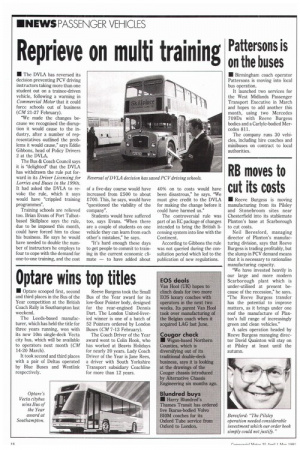Reprieve on multi training
Page 20

If you've noticed an error in this article please click here to report it so we can fix it.
• The DVLA has reversed its decision preventing PCV driving instructors taking more than one student out on a trainee-driven vehicle, following a warning in Commercial Motor that it could force schools out of business (CM 21-27 February).
"We made the changes because we recognised the disruption it would cause to the industry, after a number of representatives outlined the problems it would cause," says Eddie Gibbons, head of Policy Drivers 2 at the DVLA.
The Bus & Coach Council says it is "delighted" that the DVLA has withdrawn the rule put forward in its Driver Licensing for Lorries and Buses in the 1990s. It had asked the DVLA to revoke the rule, which it says would have "crippled training programmes".
Training schools are relieved too. Brian Evans of Port Talbotbased Skillplace says the rule, due to be imposed this month, could have forced him to close his business. He says he would have needed to double the number of instructors he employs to four to cope with the demand for one-to-one training, and the cost of a five-day course would have increased from £500 to about £700. This, he says, would have "questioned the viability of the company".
Students would have suffered too, says Evans. "When there are a couple of students on one vehicle they can learn from each other's mistakes," he says. "It's hard enough these days to get people to commit to training in the current economic climate — to have added about 40% on to costs would have been disastrous," he says. "We must give credit to the DVLA for making the change before it could have harmed us."
The controversial rule was part of an EC package of changes intended to bring the British licensing system into line with the Continent.
According to Gibbons the rule was not queried during the consultation period which led to the publication of new regulations.
























































































































